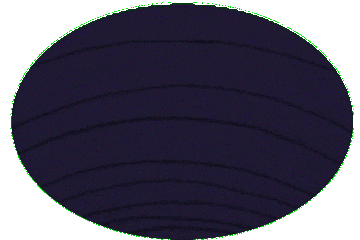Hudson River
The Hudson River is a 315-mile (507 km) river that flows from north to south largely through eastern New York state. It originates in the Adirondack Mountains at Henderson Lake in the town of Newcomb, and flows south to New York Bay, a tidal estuary between New York and Jersey City, before draining into the Atlantic Ocean. The river marks boundaries between several New York counties and the eastern border between the U.S. states of New York and New Jersey. The lower half of the river is a tidal estuary, deeper than the body of water into which it flows, occupying the Hudson Fjord, an inlet that formed during the most recent period of North American glaciation, estimated at 26,000 to 13,300 years ago. Even as far north as the city of Troy, the flow of the river changes direction with the tides. The Hudson River runs through the Munsee, Lenape, Mohican, Mohawk, and Haudenosaunee homelands. Prior to European exploration, the river was known as the Mahicannittuk by the Mohicans, Ka'nón:no by the Mohawks, and Muhheakantuck by the Lenape. The river was subsequently named after Henry Hudson, an Englishman sailing for the Dutch East India Company who explored it in 1609, and after whom Hudson Bay in Canada is also named. It had previously been observed by Italian explorer Giovanni da Verrazzano sailing for King Francis I of France in 1524, as he became the first European known to have entered the Upper New York Bay, but he considered the river to be an estuary. The Dutch called the river the North River, and they called the present-day Delaware River the South River, which formed the spine of the Dutch colony of New Netherland. Settlements of the colony clustered around the Hudson, and its strategic importance as the gateway to the American interior led to years of competition between the English and the Dutch over control of the river and colony. In the eighteenth century, the river valley and its inhabitants were the subject and inspiration of Washington Irving, the first internationally acclaimed American author. In the nineteenth century, the area inspired the Hudson River School of landscape painting, an American pastoral style, as well as the concepts of environmentalism and wilderness. The Delaware and Hudson Canal connected Port Jervis on the Delaware river to Kingston on the Hudson, creating an inland route for coal from Pennsylvania to New York that bypassed the dangerous coastal route. The Erie Canal, completed in 1825, connected Albany on the Hudson to Buffalo on Lake Erie and therefore New York to the Great Lakes, becoming an important route for western settlers. Industrial contamination of the Hudson River grew sharply in the mid-twentienth century, particularly from polychlorinated biphenyls, or PCBs. Pollution control regulations, enforcement actions, and restoration projects initiated in the late twentieth and twenty-first centuries have begun to improve water quality. Sturgeon have been seen in the Hudson in the early twenty-first century.
This article uses material from the Wikipedia article "Hudson River", which is released under the Creative Commons Attribution-Share-Alike License 3.0.
References
| Title | Summary | |
|---|---|---|
| David Sontag | ... an emergency landing in the Hudson River . [1] [1] ... | |
| 409 N Broadway | ... 409 North Broadway along the Hudson River . The home ... | |











